 W
WA robot is a machine—especially one programmable by a computer— capable of carrying out a complex series of actions automatically. Robots can be guided by an external control device or the control may be embedded within. Robots may be constructed on the lines of human form, but most robots are machines designed to perform a task with no regard to their aesthetics.
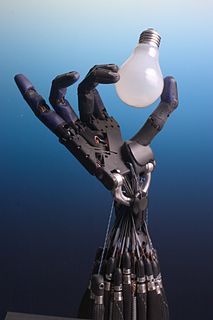 W
WRobotics is an interdisciplinary research area at the interface of computer science and engineering. Robotics involves design, construction, operation, and use of robots. The goal of robotics is to design intelligent machines that can help and assist humans in their day-to-day lives and keep everyone safe. Robotics draws on the achievement of information engineering, computer engineering, mechanical engineering, electronic engineering and others.
 W
WRobotics is the branch of technology that deals with the design, construction, operation, structural disposition, manufacture and application of robots. Robotics is related to the sciences of electronics, engineering, mechanics, and software.
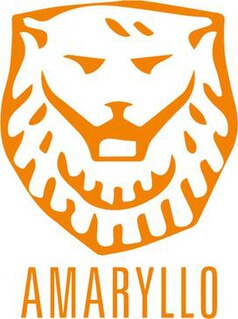 W
WAmaryllo Inc. is a multinational company founded in Amsterdam, the Netherlands, pioneering in AI as a Service market. Amaryllo develops biometric robotic technologies. It is ranked as the number-one smart home camera robot company. Amaryllo offers real-time data mining, patented camera robot, fast object recognition, secure 256-bit encrypted P2P network, and flexible cloud storage to B2G, B2C, and B2B market.
 W
WAn automaton is a relatively self-operating machine, or a machine or control mechanism designed to automatically follow a predetermined sequence of operations, or respond to predetermined instructions. Some automata, such as bellstrikers in mechanical clocks, are designed to give the illusion to the casual observer that they are operating under their own power. Since long ago, the term is commonly associated with automated puppets that resemble moving humans or animals, built to impress and/or to entertain people.
 W
WBuffalo Automation is an artificial intelligence (AI) startup that develops autonomous navigation technology for commercial ships, recreational boats, and water taxis with the goal to improve maritime safety. It is a private company based in Buffalo, New York. Thiru Vikram is the CEO of the company.
 W
WIn robotics the common normal of two non-intersecting joint axes is a line perpendicular to both axes.
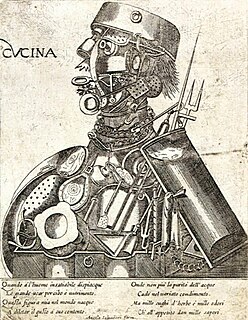 W
WA cyborg, a portmanteau of "cybernetic organism", is a being with both organic and biomechatronic body parts. The term was coined in 1960 by Manfred Clynes and Nathan S. Kline.
 W
WA droid is a fictional robot possessing some degree of artificial intelligence in the Star Wars science-fiction franchise. Coined by special effects artist John Stears, the term is a clipped form of "android", a word originally reserved for robots designed to look and act like a human. The word "droid" has been a registered trademark of Lucasfilm Ltd since 1977.
 W
WThe FIRST Global Challenge is a yearly Olympics-style robotics competition organized by the International First Committee Association. It promotes STEM education and careers for youth and was created by Dean Kamen in 2016 as an expansion of FIRST, an organization with similar objectives.
 W
WA five-bar linkage is a two degree-of-freedom mechanism that is constructed from five links that are connected together in a closed chain. All links are connected to each other by five joints in series forming a loop. One of the links is the ground or base. This configuration is also called a pantograph, however, it is not to be confused with the parallelogram copying linkage pantograph.
 W
WThe Georges Giralt PhD Award is a European scientific prize for extraordinary contributions in robotics. It is yearly awarded at the European Robotics Forum by euRobotics AISBL, a non-profit organisation based in Brussels with the objective to turn robotics beneficial for Europe’s economy and society.
 W
WMoira Gunn is both an academic and a professional journalist. She is perhaps best known as the host of the public radio program Tech Nation, its regular segment BioTech Nation, as well as the weekly tech-sci commentary, Five Minutes. It airs on the National Public Radio "NPR Now" channel at SiriusXM 122, public radio stations both nationally and internationally, and the Internet in a number of podcast syndication outlets podcast. A former NASA computer scientist and engineer, Dr. Gunn is an associate professor at the University of San Francisco,, where she is the Director of Bioentrepreneurship, where her work on BioTech Nation dovetails with academic, reflecting the multidisciplinary nature of moving scientific breakthroughs on the lab bench through to the commercial products.
 W
WIOIO is a series of open source PIC microcontroller-based boards that allow Android mobile applications to interact with external electronics. The device was invented by Ytai Ben-Tsvi in 2011, and was first manufactured by SparkFun Electronics. The name "IOIO" is inspired by the function of the device, which enables applications to receive external input ("I") and produce external output ("O").
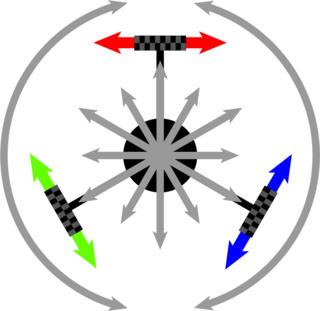 W
WA Killough platform is a three-wheel drive system that uses traditional wheels to achieve omni-directional movement without the use of omni-directional wheels. Designed by Stephen Killough, after which the platform is named, with help from Francois Pin, wanted to achieve omni-directional movement without using the complicated six motor arrangement required to achieve a controllable three caster wheel system. He first looked into solutions by other inventors that used rollers on the rims larger wheels but considered them flawed in some critical way. This led to the Killough system:Picture a round platform with three motors underneath, each governing the motion of two wheels that look like miniature balloon tires. The wheels in each pair are mounted in a cage at right angles to each other; the motor can rotate the cage so that one wheel or the other is touching the ground at any one time. By configuring the three pairs of wheels to allow the same type of motion found in three pivoting casters, and by changing the relative speeds of the motors, Killough can make his robotic platform rotate, follow a straight or curved path, and even rotate while moving forward.
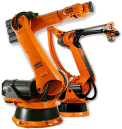 W
WLaboratory automation is a multi-disciplinary strategy to research, develop, optimize and capitalize on technologies in the laboratory that enable new and improved processes. Laboratory automation professionals are academic, commercial and government researchers, scientists and engineers who conduct research and develop new technologies to increase productivity, elevate experimental data quality, reduce lab process cycle times, or enable experimentation that otherwise would be impossible.
 W
WLaboratory robotics is the act of using robots in biology or chemistry labs. For example, pharmaceutical companies employ robots to move biological or chemical samples around to synthesize novel chemical entities or to test pharmaceutical value of existing chemical matter. Advanced laboratory robotics can be used to completely automate the process of science, as in the Robot Scientist project.
 W
WMaillardet's automaton is an automaton built in London circa 1800 by a Swiss mechanician, Henri Maillardet. It is currently part of the collections at The Franklin Institute in Philadelphia.
 W
WMarch of the Machines: Why the New Race of Robots Will Rule the World, published in paperback as March of the Machines: The Breakthrough in Artificial Intelligence (2004), is a book by Kevin Warwick. It presents an overview of robotics and artificial intelligence (AI), often focusing on anecdotes of Warwick's own work, and then imagines future scenarios. In particular, Warwick finds it likely that such AIs will become smart enough to replace humans, and humans may be unable to stop them.
 W
WIvar Mendez is the Fred H. Wigmore Professor and Chairman of Surgery at the University of Saskatchewan and the Unified Head of Surgery for the Province of Saskatchewan. He is internationally known for his work in cell transplantation for Parkinson's disease and the use of remote presence robotics in neurosurgery and primary health care.
 W
WMicrobotics is the field of miniature robotics, in particular mobile robots with characteristic dimensions less than 1 mm. The term can also be used for robots capable of handling micrometer size components.
 W
WA mind-controlled wheelchair is a mind-machine interfacing device that uses thought to command the motorised wheelchair's motion. The first such device to reach production was designed by Diwakar Vaish, Head of Robotics and Research at A-SET Training & Research Institutes. The wheelchair is of great importance to patients suffering from locked-in syndrome (LIS), in which a patient is aware but cannot move or communicate verbally due to complete paralysis of nearly all voluntary muscles in the body except the eyes. Such wheelchairs can also be used in case of muscular dystrophy, a disease that weakens the musculoskeletal system and hampers locomotion.
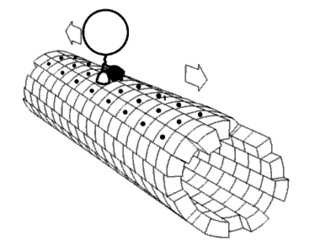 W
WMolecular nanotechnology (MNT) is a technology based on the ability to build structures to complex, atomic specifications by means of mechanosynthesis. This is distinct from nanoscale materials. Based on Richard Feynman's vision of miniature factories using nanomachines to build complex products, this advanced form of nanotechnology would make use of positionally-controlled mechanosynthesis guided by molecular machine systems. MNT would involve combining physical principles demonstrated by biophysics, chemistry, other nanotechnologies, and the molecular machinery of life with the systems engineering principles found in modern macroscale factories.
 W
WNanorobotics is an emerging technology field creating machines or robots whose components are at or near the scale of a nanometer. More specifically, nanorobotics refers to the nanotechnology engineering discipline of designing and building nanorobots, with devices ranging in size from 0.1 to 10 micrometres and constructed of nanoscale or molecular components. The terms nanobot, nanoid, nanite, nanomachine, or nanomite have also been used to describe such devices currently under research and development.
 W
WNuro is an American robotics company based in Mountain View, California and founded by Jiajun Zhu and Dave Ferguson. Nuro develops autonomous delivery vehicles, and was the first company to receive an autonomous exemption from the National Highway Traffic Safety Administration since its vehicles are designed to carry goods instead of humans.
 W
WOpen-source robotics (OSR) is where the physical artifacts of the subject are offered by the open design movement. This branch of robotics makes use of open-source hardware and free and open-source software providing blueprints, schematics, and source code. The term usually means that information about the hardware is easily discerned so that others can make it from standard commodity components and tools—coupling it closely to the maker movement and open science.
 W
WA passenger drone is a type of personal air vehicle (PAV). The first passenger drone was introduced at the Consumer Electronics Show (CES) 2016 by Chinese entrepreneurs and is called the Ehang 184.
 W
WIn computer vision, pattern recognition, and robotics, point set registration, also known as point cloud registration or scan matching, is the process of finding a spatial transformation that aligns two point clouds. The purpose of finding such a transformation includes merging multiple data sets into a globally consistent model, and mapping a new measurement to a known data set to identify features or to estimate its pose. Raw 3D point cloud data are typically obtained from Lidars and RGB-D cameras. 3D point clouds can also be generated from computer vision algorithms such as triangulation, bundle adjustment, and more recently, monocular image depth estimation using deep learning. For 2D point set registration used in image processing and feature-based image registration, a point set may be 2D pixel coordinates obtained by feature extraction from an image, for example corner detection. Point cloud registration has extensive applications in autonomous driving, motion estimation and 3D reconstruction, object detection and pose estimation, robotic manipulation, simultaneous localization and mapping (SLAM), panorama stitching, virtual and augmented reality, and medical imaging.
 W
WRapid prototyping is a group of techniques used to quickly fabricate a scale model of a physical part or assembly using three-dimensional computer aided design (CAD) data. Construction of the part or assembly is usually done using 3D printing or "additive layer manufacturing" technology.
 W
WA robot leg is a mechanical leg that performs the same functions that a human leg can. The robotic leg is typically programmed to execute similar functions as a human leg. A robotic leg is similar to a prosthetic leg. However, a robotic leg can be controlled electrically or mechanically. To have the robotic leg emulate human leg behaviors, surgeons must redirect the nerves that previously controlled some of the person’s lower-leg muscles to cause the thigh muscles to contract. Sensors embedded in the robotic leg measure the electrical pulses created by both a re-innervated muscle contraction, and the existing thigh muscle.
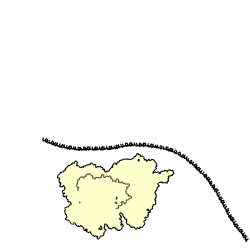 W
WRobotic materials are composite materials that combine sensing, actuation, computation, and communication in a repeatable or amorphous pattern. Robotic materials can be considered computational metamaterials in that they extend the original definition of a metamaterial as "macroscopic composites having a man-made, three-dimensional, periodic cellular architecture designed to produce an optimized combination, not available in nature, of two or more responses to specific excitation" by being fully programmable. That is, unlike in a conventional metamaterial, the relationship between a specific excitation and response is governed by sensing, actuation, and a computer program that implements the desired logic.
 W
WRobotic sensors are used to estimate a robot's condition and environment. These signals are passed to a controller to enable appropriate behavior.
 W
WSalvius is the first open source humanoid robot to be built in the United States. Introduced in 2008, Salvius, whose name is derived from the word 'salvaged', has been constructed with an emphasis on using recycled components and materials to reduce the costs of designing and construction. The robot is designed to be able to perform a wide range of tasks by having a body structure that is similar to that of a human. The primary goal for Salvius is to create a robot that can function dynamically in a domestic environment.
 W
WA self-driving car, also known as an autonomous vehicle (AV), connected and autonomous vehicle (CAV), full self-driving car or driverless car, or robo-car or robotic car, is a vehicle that is capable of sensing its environment and moving safely with little or no human input.
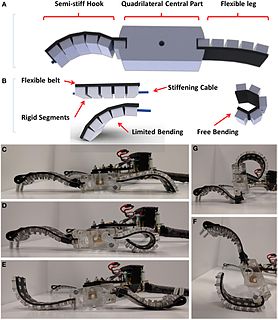 W
WSoft Robotics is the specific subfield of robotics dealing with constructing robots from highly compliant materials, similar to those found in living organisms.
 W
WSpyce Kitchen or just Spyce is a robotic-powered restaurant which prepares food in "three minutes or less".
 W
WMaarten Steinbuch is a high-tech systems scientist, entrepreneur and communicator. He holds the chair of Systems & Control at Eindhoven University of Technology (TU/e), where he is Distinguished University Professor. His research spans from automotive engineering to mechatronics, motion control, and fusion plasma control. He is most known for his work in the field of advanced motion control, as well as in robotics for high precision surgery. Steinbuch is a prolific blogger and a key opinion leader on the influence of new technologies on society. He is well known as an advocate of electric vehicles.
 W
WSuperpedestrian Inc., is a transportation robotics company based in Cambridge, Massachusetts, that develops micromobility technologies for small-scale electric vehicles. The company works with vehicle for hire companies, scooter sharing, and bicycle-sharing systems to improve the safety and reliability of their vehicle fleets. Superpedestrian is also the manufacturer of a consumer-facing product known as the Copenhagen Wheel, an electric bicycle wheel that transforms a traditional bicycle into a hybrid e-bike.
 W
WTaurob tracker is a mobile robot, manufactured by taurob GmbH in Austria. It has been originally developed as a remote controlled reconnaissance platform for fire departments. but is currently used also by the military, civil-defense units, universities and the oil and gas industry around the world.
 W
WTermite-inspired robots or TERMES robots are biomimetic autonomous robots capable of building complex structures without a central controller. A prototype team of termite-inspired robots was demonstrated by Harvard University researchers in 2014, following four years of development. Their engineering was inspired by the complex mounds that termites build, and was accomplished by developing simple rules to allow the robots to navigate and move building blocks in their environment. By following these simple rules, the robots could construct complex structures through a process called stigmergy, without requiring constant human instruction or supervision.
 W
WRajko Tomović (1919–2001) was a Serbian scientist and he worked programs in robotics, information technologies in medicine, bio-medical engineering, rehabilitation engineering, artificial organs, and other disciplines. The first artificial hand with five fingers in the world was made in 1963. in Belgrade. He was a member of Serbian Academy of Sciences and Arts (SANU).
 W
WAn unmanned aerial vehicle (UAV) is an aircraft without a human pilot on board. UAVs are a component of an unmanned aircraft system (UAS); which include a UAV, a ground-based controller, and a system of communications between the two. The flight of UAVs may operate with various degrees of autonomy: either under remote control by a human operator or autonomously by onboard computers referred to as an autopilot.
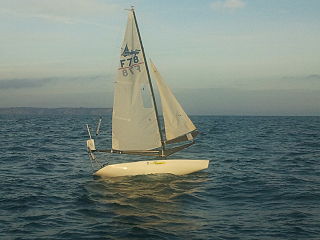 W
WVaimos is an autonomous sailing boat with embedded instrumentation for ocean surface measurements.
 W
WA vocoder is a category of voice codec that analyzes and synthesizes the human voice signal for audio data compression, multiplexing, voice encryption or voice transformation.
 W
WWorkplace robotics safety is an aspect of occupational safety and health when robots are used in the workplace. This includes traditional industrial robots as well as emerging technologies such as drone aircraft and wearable robotic exoskeletons. Types of accidents include collisions, crushing, and injuries from mechanical parts. Hazard controls include physical barriers, good work practices, and proper maintenance.